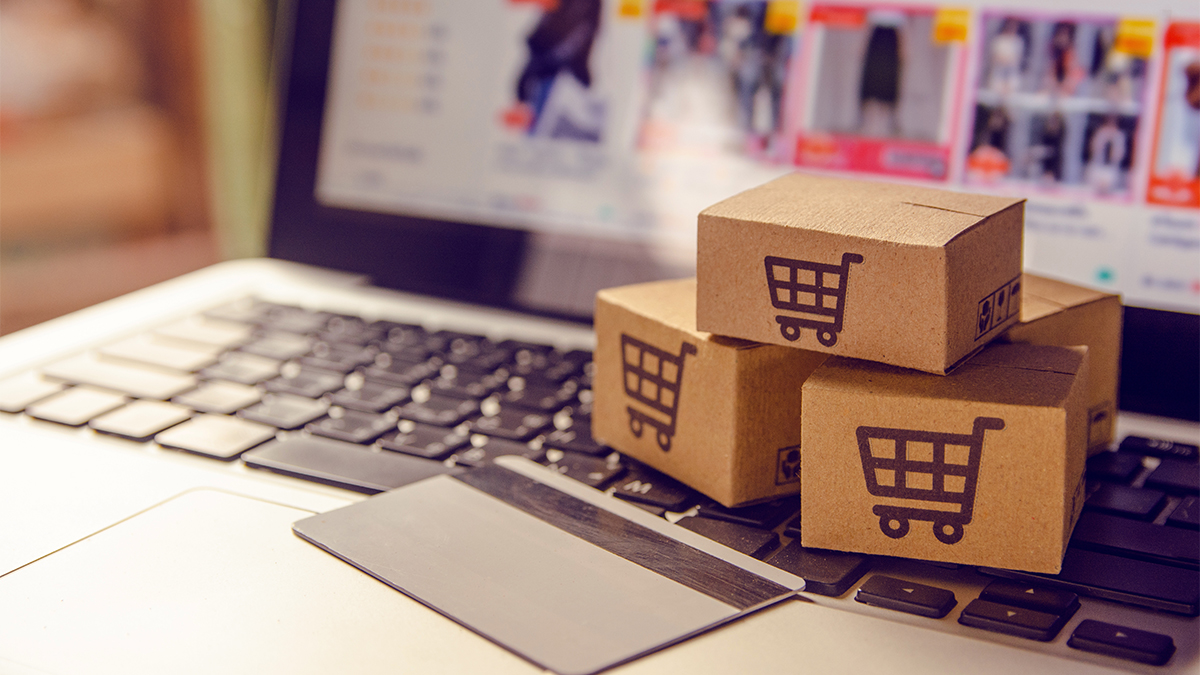E-commerce, the buying and selling of goods and services over the internet, has become a cornerstone of modern economies worldwide. From small startups to global giants like Amazon and Alibaba, online commerce is reshaping how businesses operate and how consumers shop. In this article, we’ll dive deep into the transformative role e-commerce plays in a country’s economy, exploring its impact on growth, jobs, innovation, and more. Whether you’re a business owner looking to go digital or just curious about how online shopping fuels economic progress, this guide will unpack it all with real-world insights and practical takeaways.
Why E-commerce Matters to Economic Growth
E-commerce is more than just a convenience—it’s a powerful engine for economic development. By enabling businesses to reach global markets and reducing operational costs, it drives GDP growth and fosters entrepreneurship. For instance, global e-commerce sales hit nearly $27 trillion in 2022, with countries like China and the United States leading the charge. This growth isn’t just about big players; small businesses and startups benefit too, as digital platforms level the playing field.
Boosting GDP Through Online Sales
E-commerce directly contributes to a country’s GDP by increasing retail sales and tax revenues. In 2020, China’s e-commerce market alone reached $2 trillion, accounting for over 30% of its total retail sales. This surge in online transactions fuels economic expansion by generating income for businesses and governments alike.
Supporting Small and Medium Enterprises (SMEs)
For SMEs, e-commerce is a game-changer. Unlike traditional retail, which requires costly physical storefronts, online platforms allow small businesses to compete globally with minimal investment. For example, a small artisanal shop in rural India can sell handmade crafts on platforms like Etsy or Flipkart, reaching customers worldwide without breaking the bank.
Job Creation and Employment Opportunities
E-commerce doesn’t just create wealth—it creates jobs. From web developers to logistics workers, the industry supports millions of roles across various sectors. In developing countries, e-commerce has been a lifeline for semi-skilled workers and women, offering flexible work opportunities that traditional industries often lack.
Direct and Indirect Job Growth
E-commerce platforms directly employ people in roles like customer service, marketing, and IT. Indirectly, they stimulate jobs in logistics, warehousing, and delivery. For instance, China’s Taobao Villages—rural areas heavily engaged in e-commerce—have created jobs with wages equal to or higher than urban private industries, boosting local economies.
Empowering Women and Youth
E-commerce offers unique opportunities for underrepresented groups. Women entrepreneurs, for example, can start businesses from home, bypassing traditional barriers like access to finance or physical infrastructure. In 2021, UN Women noted that gender gaps in the digital economy cost low- and middle-income countries $1 trillion in GDP over a decade, underscoring the need for inclusive e-commerce policies.
Driving Innovation and Infrastructure Development
The rise of e-commerce has sparked innovation across industries, from AI-powered chatbots to digital payment systems. It’s also pushed governments and businesses to invest in infrastructure like high-speed internet and logistics networks, which benefit the broader economy.
Technological Advancements
E-commerce fuels innovation in areas like artificial intelligence and augmented reality. Virtual try-ons for apparel or AI-driven product recommendations enhance the shopping experience, creating demand for tech development. These advancements ripple across industries, driving economic growth.
Infrastructure Investments
To support e-commerce, countries are investing heavily in digital and physical infrastructure. For example, Vietnam’s internet penetration jumped from 26% in 2010 to 70% in 2020, correlating with a 200% increase in exports, partly driven by e-commerce platforms. Improved logistics networks and internet access benefit not just online businesses but entire communities.
Enhancing Global Trade and Exports
E-commerce has transformed international trade by making it easier for businesses to reach global markets. Cross-border e-commerce sales are growing rapidly, contributing to a country’s export revenue and fostering economic globalization.
Expanding Market Reach
Unlike traditional retail, e-commerce eliminates geographical barriers. A small business in the UK can sell to customers in Asia or Africa with ease. In 2018, 23% of the world’s 1.45 billion online shoppers made cross-border purchases, up from 17% in 2016, highlighting the growing global reach of e-commerce.
Impact on Exports
A World Bank study found that a 10% increase in internet users boosts exports by 1.5%. Countries with robust e-commerce ecosystems, like India and Vietnam, have seen significant export growth, driven by platforms like Flipkart and Amazon. This connectivity helps local products compete on a global stage.
Challenges of E-commerce in Economic Development
While e-commerce offers immense benefits, it also presents challenges that can hinder its economic impact. From digital divides to cybersecurity risks, addressing these issues is critical for inclusive growth.
The Digital Divide
Not all countries or communities have equal access to e-commerce. In 2023, only 35% of people in least developed countries used the internet, compared to 67% globally. This gap limits economic opportunities for rural and low-income populations.
Cybersecurity and Consumer Trust
Cybersecurity risks, such as data breaches, can erode consumer trust in e-commerce. Countries like China and India have introduced policies to protect consumer data, recognizing that trust is essential for sustained growth. Strong data privacy laws are critical to maintaining confidence in online transactions.
Environmental Concerns
The rise of e-commerce has increased packaging waste and carbon emissions from logistics. Balancing economic growth with sustainability is a growing challenge, as consumers demand eco-friendly practices from online retailers.
Pros and Cons of E-commerce in the Economy
To understand the full impact of e-commerce, let’s weigh its benefits against its challenges.
Pros:
- Global Reach: Businesses can access international markets without physical stores.
- Cost Efficiency: Lower operational costs compared to brick-and-mortar retail.
- Job Creation: Supports diverse roles in tech, logistics, and marketing.
- Innovation: Drives advancements in AI, digital payments, and logistics.
Cons:
- Digital Divide: Unequal access to internet and technology limits inclusivity.
- Cybersecurity Risks: Data breaches can undermine consumer trust.
- Environmental Impact: Increased packaging and logistics strain sustainability efforts.
- Competition: Small businesses may struggle to compete with e-commerce giants.
Comparing E-commerce’s Impact Across Countries
| Country | E-commerce Market Size (2020-2022) | Share of Retail Sales | Key Impact on Economy |
|---|---|---|---|
| China | $2 trillion (2020) | 30% | Boosts GDP, job creation, and rural development through Taobao Villages. |
| United States | $1 trillion (2022 est.) | 15% | Drives innovation and supports SMEs, but understates consumer gains in GDP. |
| India | $188 billion (2025 proj.) | Growing rapidly | Enhances exports and empowers small businesses via platforms like Flipkart. |
| UK | High per capita spending | 25-30% | Leads Europe in e-commerce revenue, fostering tech and logistics growth. |
This table shows how e-commerce’s economic impact varies by country, with emerging economies like India catching up to leaders like China and the UK.
People Also Ask (PAA) Section
What is e-commerce and how does it work?
E-commerce involves buying and selling goods or services online through websites, apps, or social media. It relies on digital platforms, payment systems, and logistics networks to connect buyers and sellers. For example, a customer in the US can order a product from a UK-based Etsy seller, pay via PayPal, and have it shipped internationally.
How does e-commerce contribute to economic growth?
E-commerce boosts economic growth by increasing retail sales, creating jobs, and fostering innovation. It allows businesses to reach global markets, reduces costs, and drives infrastructure investments. In Malaysia, for instance, e-commerce contributed 22.5% to GDP growth, showcasing its transformative potential.
What are the challenges of e-commerce for businesses?
Challenges include cybersecurity risks, high competition, and logistical complexities like returns and refunds. Small businesses may also struggle with technological upgrades and regulatory compliance. Governments can help by improving digital infrastructure and data privacy laws.
Where can businesses get e-commerce tools?
Businesses can access e-commerce tools from platforms like Shopify, BigCommerce, or WooCommerce, which offer user-friendly solutions for building online stores. For advanced needs, companies like Adobe Commerce provide robust, customizable platforms. Check out BigCommerce for scalable solutions.
What are the best tools for e-commerce startups?
Top tools include Shopify for easy setup, WooCommerce for WordPress integration, and BigCommerce for scalability. Payment gateways like Stripe and logistics solutions like ShipStation are also essential. These tools help startups compete without massive upfront costs.
Real-World Example: A Small Business Success Story
Let’s talk about Priya, a young entrepreneur from a small town in India. A few years ago, she started making handmade jewelry but struggled to sell locally due to limited foot traffic. Then, she discovered Flipkart. With a small investment, she set up an online store, reaching customers across India and even in the US. Today, her business employs five people, supports her family, and contributes to her local economy through taxes and job creation. Priya’s story shows how e-commerce can transform lives, especially in underserved areas. It’s not just about sales—it’s about opportunity.
The Emotional Appeal of E-commerce
There’s something thrilling about clicking “buy now” and having a package arrive at your door. It’s like Christmas morning, but you get to choose the gifts! For businesses, the joy comes from seeing sales roll in while you sleep, thanks to 24/7 online stores. But it’s not all rosy—cybersecurity worries or a laggy website can turn that thrill into frustration. By investing in secure, user-friendly platforms, countries can ensure e-commerce remains a source of joy and economic growth for everyone.
FAQ Section
Q1: How does e-commerce help small businesses grow?
A: E-commerce allows small businesses to reach global markets, reduce operational costs, and compete with larger players. Platforms like Etsy or Shopify provide affordable tools to set up online stores, enabling growth without physical storefronts.
Q2: What role does government policy play in e-commerce?
A: Government policies, like data protection laws and infrastructure investments, create a conducive environment for e-commerce. For example, Singapore’s “Smart Nation” initiative has boosted its digital economy by improving connectivity and trust.
Q3: How does e-commerce affect traditional retail?
A: E-commerce can reduce brick-and-mortar sales, with studies showing a 4% decline in physical store spending due to online competition. However, many retailers adapt by launching online stores, blending physical and digital channels.
Q4: Can e-commerce reduce economic inequality?
A: Yes, e-commerce can reduce inequality by providing opportunities for rural and underserved communities. China’s Taobao Villages, for instance, have increased rural incomes by 80% through online sales.
Q5: What are the environmental impacts of e-commerce?
A: E-commerce increases packaging waste and logistics-related emissions. However, innovations like sustainable packaging and optimized delivery routes are helping mitigate these impacts, balancing growth with environmental responsibility.
Conclusion: The Future of E-commerce in Economic Development
E-commerce is no longer just a trend—it’s a vital pillar of modern economies. From boosting GDP and creating jobs to driving innovation and global trade, its impact is undeniable. However, challenges like the digital divide and environmental concerns require proactive solutions. By investing in infrastructure, fostering inclusive policies, and embracing technological advancements, countries can harness e-commerce to build stronger, more resilient economies. Whether you’re a consumer, a small business owner, or a policymaker, the digital marketplace offers endless possibilities—ready to explore them?









Leave a Reply